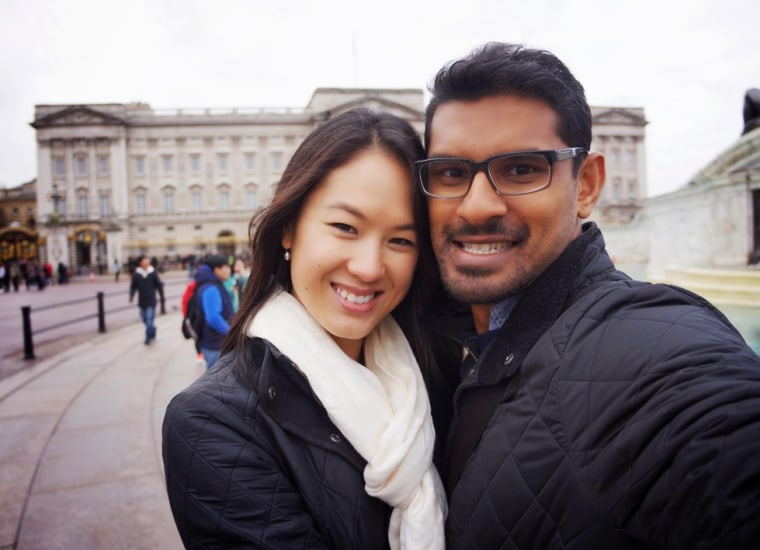During the Google I/O developers conference this week, the tech giant unveiled a slew of new photo-related features now available on Google+. Could those features — which work their magic without any user intervention — be what lures some away from the billion-user mammoth that is Facebook and into Google's 190-million-user "ghost town" over time?
"I remember, about nine months ago, we were doing some early tests with some users," Google senior vice president Vic Gundotra told NBC News in an interview. "And [an individual in the test group] was so blown away by the improvement of the quality of her pictures that she actually downloaded them and shared them on another social site."
The upshot of these changes? "To a large number of users, their photos are just going to look better. They're not really gonna know why," he said.
The reason some of the photos uploaded to Google+ will mysteriously look better to users is a little feature called Auto Enhance. When you upload photos to Google+, they are automatically analyzed and tweaked. Brightness, contrast, saturation, structure, noise, focus and "dozens" of other aspects are automatically adjusted. (Of course, you can turn off Auto Enhance or you can just edit photos manually using the tools Google offers on the Web and on mobile.)
In some cases, the improvements can be dramatic — during Wednesday's keynote presentation, Gundotra showed how wrinkles on his own forehead were softened significantly using Auto Enhance — but in most instances the changes are incredibly subtle.
And while most of the changes are positive, there are a few instances in which the Auto Enhance versions of images aren't exactly preferred. In our own tests of the feature, we found that it was typically images which had already been edited by a user that didn't mesh too well with the feature. (Photos which were already sharpened prior to upload often look atrocious, skin which was already softened turned into something right out of a bad Glamour Shots studio session, and so on.)
The times when Auto Enhance genuinely shines involve photos uploaded directly from mobile devices, un-retouched images from cameras and pictures synced from Google Glass.
When it came to those photos, the slight enhancements put more focus on people in images, made landscapes look brighter, and did just enough to make originally flat images pop. It's almost as if Auto Enhance encourages one to put less effort into capturing images and more into focusing on being in the moment, a theme evident in other recent Google products such as Glass.
In addition to Auto Enhance, Google+ users now also have access to a group of features labeled Auto Awesome. Auto Awesome kicks into action when you take a bunch of photos in a row, creating animated images (GIFs), confirming smiles in group photos, stitching panoramas, sorting portraits together into photo booth-style arrangements, and turning sets of bracketed exposures into HDR photos. In our tests, Auto Awesome wasn't consistently good about stitching together panoramas or dealing with group photos, but it definitely handled animated images well. The extra images it generated were always a bit of a surprise, appearing in the Photos folder like a little gift from Google.
While a Google spokesperson declined to share how many photos had been uploaded to Google+ since its launch in June 2011, a public Google+ post by product manager Denise Ho suggests that there are "billions and billions of pictures" on the service already. (We, of course, do not know if Ho's vague statistic would include photos sucked into Google+ from Google's Picasa image organizer.) A Facebook spokesperson did tell NBC News that more than 240 billion photos have been uploaded to Facebook since its launch in 2004, and that about 350 million new images are uploaded each day.
It's hard to argue that photos aren't important to those who use social media. And Google+ appears to be banking on that little detail. "If we can make your memory more beautiful, you're going to be more likely to love it and share it," Gundotra remarked.
Facebook offers a number of photo-editing options and even has a Facebook Camera app, which — as the name implies — is dedicated to capturing images. But the social network doesn't have something that compares directly to the Auto Enhance and Auto Awesome features of Google+, which kick in without user intervention. Will that lack of auto-magic be enough to make users more likely to dip their toes in more Google-y waters and share their images on Google+ instead? Maybe, maybe not. But those animated images generated by Auto Awesome are pretty darn tempting.
Want more tech news or interesting links? You'll get plenty of both if you keep up with Rosa Golijan, the writer of this post, by following her onTwitter, subscribing to her Facebook posts, or circling her on Google+.
